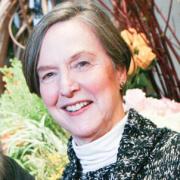Getting at the Soul-Life in Classrooms: The Work of Teachers and Teacher Educators (Voices)
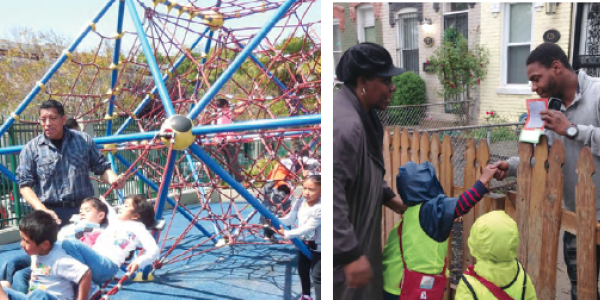
You are here
Thoughts on the Article | Barbara Henderson, Voices Executive Editor
Frances Rust uses American philosopher John Dewey’s idea of “soul-life” to frame her review of several teacher research studies published in Voices of Practitioners. To provide a range of perspectives, Rust considers two studies by individual teachers (Escamilla Calan 2016; Ardalan 2017), one by a teacher collaborative (Ortiz et al. 2014), and one by a teacher educator (Murphy 2016). In each case, Rust demonstrates how an inquiry stance enables us to continually deepen our understanding of the children we work with and to courageously engage in conversations about our practice. These habits of mind allow us to grow as professionals throughout our careers.
Rust shows how teacher researchers are positioned to create educational environments in which children love learning and educators become great teachers—their work thereby contributing to the improvement of our educational system for all.
The editors of Voices of Practitioners strongly encourage you, as an early childhood practitioner, to submit a manuscript about your teacher research. We are looking for infant and toddler, preschool, and primary-grade teachers in institutional and home care settings; school leaders and administrators; teacher educators; and others in related fields who work with children birth to 8 years. Practitioners might include home visitors, social workers, parent educators, and community educators who work in places such as children’s museums, community gardens, libraries, and after-school programs. We are eager to receive teacher research from various perspectives and settings.
We understand that early childhood practitioners cannot easily find the time and energy to write pieces for publication. Consequently, we editors typically work closely with the authors of provisionally accepted manuscripts to support the development of their articles.
To get started, please take a look at our recent Voices articles (NAEYC.org/resources/pubs/VOP) and our manuscript guidelines (NAEYC.org/resources/pubs/VOP/about-voices-practitioners). Also, watch for Voices of Practitioners conference sessions, which take place each year at NAEYC’s Annual Conference in November and Professional Learning Institute in June. We look forward to being in touch with you.
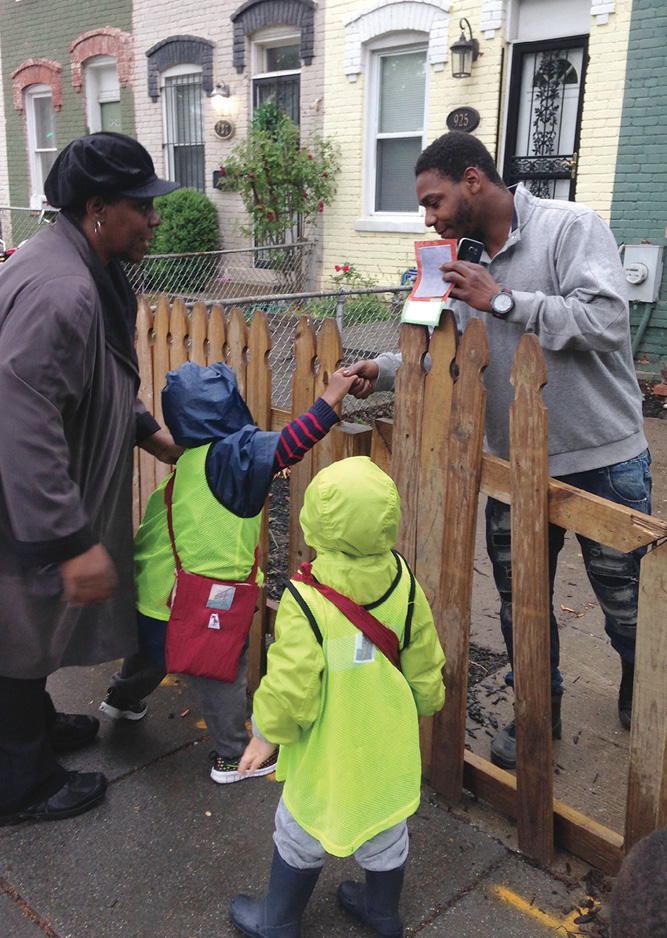 Over a century ago, John Dewey ([1904] 1977) wrote his essay “The Relation of Theory to Practice in Education,” in which he provided a remarkable blueprint for teacher education that continues to be relevant for teachers and teacher educators today. Dewey’s special focus throughout the essay is on teachers’ growing knowledge of their students and of their students’ thinking. He described this as “insight into soul-action” (254)—a teacher’s ability to discern how students are making sense of and responding to the teacher’s initiatives, and the teacher’s capacity to discover “the attitudes and habits which his [or her] own modes of being, saying, and doing are fostering or discouraging” among students (262). Implicit here is the importance of developing what some scholars now describe as an inquiry stance—a propensity to question, to wonder, to find teaching constantly interesting, even fascinating—which can begin in teacher education but must continue throughout a teacher’s professional life. Teachers must become “students of teaching” (Cochran-Smith & Lytle 1993, 2009).
Over a century ago, John Dewey ([1904] 1977) wrote his essay “The Relation of Theory to Practice in Education,” in which he provided a remarkable blueprint for teacher education that continues to be relevant for teachers and teacher educators today. Dewey’s special focus throughout the essay is on teachers’ growing knowledge of their students and of their students’ thinking. He described this as “insight into soul-action” (254)—a teacher’s ability to discern how students are making sense of and responding to the teacher’s initiatives, and the teacher’s capacity to discover “the attitudes and habits which his [or her] own modes of being, saying, and doing are fostering or discouraging” among students (262). Implicit here is the importance of developing what some scholars now describe as an inquiry stance—a propensity to question, to wonder, to find teaching constantly interesting, even fascinating—which can begin in teacher education but must continue throughout a teacher’s professional life. Teachers must become “students of teaching” (Cochran-Smith & Lytle 1993, 2009).
The connection between teaching in this way and students’ learning is profound. One has only to look back at children who grew up in the Dewey School (Mayhew & Edwards 1936), Maria Montessori’s schools, or the British Infant Schools made famous in the 1960s by Joseph Featherstone (1968). Today, one could look at children emerging from the preschool classrooms of Reggio Emilia, Italy (Edwards, Gandini, & Forman 1998), or from the knowledge-building environments described by Marlene Scardamalia and Carl Bereiter (2006) to know that teachers who support thoughtfulness, inquiry, and creativity—high levels of learning—among their students are teachers who are bent on learning from children. They watch, they listen, they observe, they ask, they study, they reflect. They are on a constant trajectory toward getting better at teaching, and they are not alone in their endeavor. Inevitably, they work in a learning community that enables and supports them in their quest to deepen their knowledge of their classrooms and their understandings of teaching and learning.
Two such communities come to mind. One is the Teachers Network Leadership Institute (http://teachersnetwork.org/tnli/), which has been disbanded but not without leaving a trove of teacher research and reference materials. The other is Voices of Practitioners (NAEYC.org/resources/pubs/vop), an online journal (featured also in Young Children) with articles by an increasingly powerful group of early childhood teachers and teacher educators who have come together to share and grow their professional knowledge. Their work is the chief resource for this article.
What we have learned over the past 20 years from networks like these is that teachers who work in this way do not work alone. They are embedded in classrooms and schools where there is active discussion about teaching and learning. See, for example, Isauro Escamilla Calan’s (2016) “A Dialogue with the Shadows” or Annie Ortiz and colleagues’ (2014) study, “Teacher Research on Boys’ Literacy in One Elementary School.” Like so many of the studies and articles in Voices of Practitioners, these are examples of teachers looking and listening deeply—touching the soul-life of their classrooms—and sharing their work and their insights with one another.
Teacher education is the whole of a teacher’s professional life—not just preservice.
They begin with a noticing, which evolves into a question that sparks interest, then moves into an increasingly deep conversation among teachers and children, honoring the powerful intellectual work of sharing insights with one another. For Isauro, who was intent on assessing his teaching skills, the research conversation began with his questions: “I asked myself, ‘How do I listen to children? What do I learn about what is on their minds, how they think, and what skills they have?’” (Escamilla Calan 2016, 8). The conversation moved from there to the children finding a snail in the school garden. He writes,
We thought this small creature could be the springboard for our new class project (we adults had been paying close attention to children’s conversations, and they seemed genuinely interested in this slow mover). We carried the snail inside the classroom and put it on a white sheet of paper on a table next to the windows. (8)
From the children’s drawings, a series of conversations emerged that moved the children toward new understandings of light and shadow and moved the teachers into new relationships with each other and new understandings about teaching:
My assistant teacher and I became a team, and we had great respect for each other. We blended the boundaries of the traditional hierarchy of assistant teacher and teacher. . . . We listened to the tapes together and talked about what we heard. . . .
We shared a close relationship. And for this to happen, we needed to talk about the children. The more we talked, the more we documented, and the more we came to realize that what we were doing was just a start. (Escamilla Calan 2016, 11)
Similarly, Annie Ortiz and her team (2014) moved from a noticing—here, a local conversation about boys’ literacy—to a full research project that brought teachers and community together “to learn about boys’ literacy and apply the results to our teaching” (1). With rich documentation of boys’ work; observations of their reading habits, choices, and conversations; and honest discussions among teachers, this group of teachers, with support from their school and district, reshaped their teaching. Ortiz describes her own shift:
After finding out the interests of boys from our surveys, quick-write prompts, and squiggles, I changed my mind. Writing groups would be same-gender-based groups. I learned boys would respond to boys and their writing in a sophisticated manner if given the opportunity, but I hadn’t provided that opportunity in the past. Instead of hearing girls responding to writing with “Oh, how gross,” I heard boys respond to boys like writers responding to writers. It was the same gross topic, but they were giving each other writerly advice, and pieces were revised. “What if you moved that part to the middle?” or “Can you tell me how the alien got the space ship?” were pieces of their conversations. The productivity of writing groups had increased by that small but significant change. Boys were connecting [with] boys on a deeper level around topics they were all interested in developing. My teaching was impacted by this change. I had underestimated boys. (Ortiz et al. 2014, 10)
Changes in practice that take root in deep ways (as these educators and so many others in Voices of Practitioners demonstrate) inevitably occur where there is a community of learners that often expands beyond the immediate classroom to involve not only students and teachers in a school but also administrators and parents (see Ardalan 2017). These are places where the community knows and values the school as “our school.” It is far easier to find this professional conversation in early childhood environments than in schools working with older children; but even in early childhood settings it is rare.
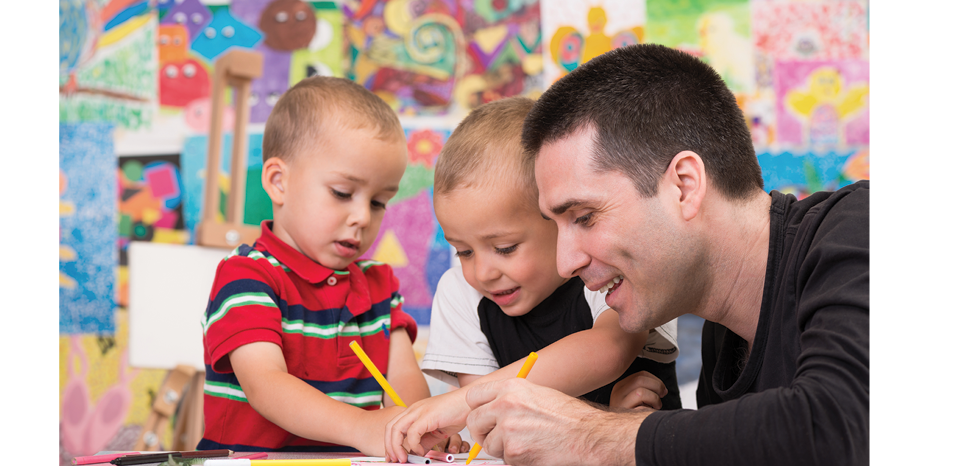
To shift the balance to make schools and classrooms learning environments for all requires a radical shift in understandings of teaching, learning, and professional growth (Rust 2010). This shift begins with the acknowledgement that teacher education is the whole of a teacher’s professional life—not just the short time of preservice—and that teaching is always about learning. Dewey ([1904] 1977) wrote, “Unless a teacher is such a student, he may continue to improve in the mechanics of school management, but he can not grow as a teacher, an inspirer and director of soul-life” (256).
No part of Dewey’s message is new to early childhood teacher educators, but even now—even with all the time we have had to try to live into the meaning of his powerful essay—there is still so much to be understood. This is where the remarkable work of the teachers and teacher educators who have contributed to Voices of Practitioners can help the field to move forward. What we see here are teacher educators building programs in ways that enable their students to develop the skills of teacher research. Debra Murphy (2016), for example, wondered,
How can I possibly teach my students everything they will need to know when they get into the classroom with children? How can I prepare them for the complexity of teaching? And how can I help to address the issues of high stress, low status, and low compensation that plague the early childhood education workforce? (61)
These are questions that at some point confront each of us who are teacher educators. What Murphy did was to
introduce teacher research through visual documentation and a range of writing assignments that require students to reflect on their field hours, observations, readings, class discussions, and presentations. I became convinced within the first semester that I incorporated teacher research into one of my courses, that these practices are transformative. My students began asking meaningful questions, collecting data that allowed them to explore and measure the effects of their teaching, and developing convincing conclusions about what worked and what they still needed to change. More than ever before in my community college teaching experience, the students’ research presentations became engaging and informative arguments about how to reform their work in early childhood settings. (62)
From questions to an initial experiment in a process, much like those of Escamilla Calan, Ortiz and colleagues, and other Voices of Practitioners contributors, Murphy moved to shaping the entire teacher education program so that these teachers, many of whom were and are already in classrooms, were bringing theory and practice together. They were learning deeply in their course work about the content of the early childhood curriculum, and their time in classrooms was now framed to enable them to question, observe, and reflect—the essential framework that Dewey lays out.
Are we willing to share what we learn to build conversations of practice in communities of learners?
But what of beginning teachers? How might teacher educators guiding preservice teachers toward professional stature enable theory and practice to come together, particularly when so few have themselves experienced the deeply thoughtful environments that are so present in the studies in Voices of Practitioners? Dewey began his essay with an insight that may guide us:
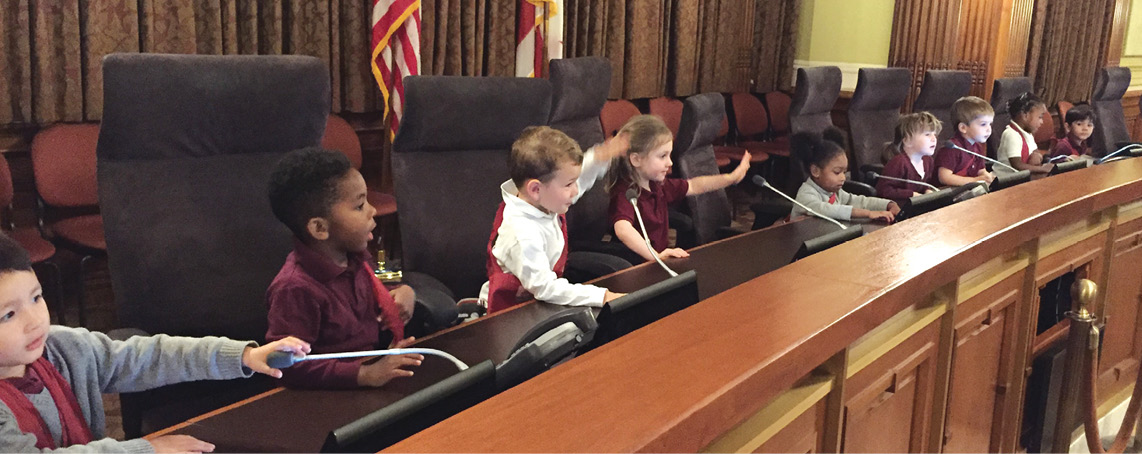 There is a technique of teaching, just as there is a technique of piano-playing. The technique, if it is to be educationally effective, is dependent upon principles. But it is possible for a student to acquire outward form of method without capacity to put it to genuinely educative use. As every teacher knows, children have an inner and an outer attention. The inner attention is the giving of the mind without reserve or qualification to the subject in hand. It is the first-hand and personal play of mental powers. As such, it is a fundamental condition of mental growth. To be able to keep track of this mental play, to recognize the signs of its presence or absence, to know how it is initiated and maintained, how to test it by results attained, and to test apparent results by it, is the supreme mark and criterion of a teacher. It means insight into soul-action, ability to discriminate the genuine from the sham, and capacity to further one and discourage the other. (Dewey [1904] 1977, 254)
There is a technique of teaching, just as there is a technique of piano-playing. The technique, if it is to be educationally effective, is dependent upon principles. But it is possible for a student to acquire outward form of method without capacity to put it to genuinely educative use. As every teacher knows, children have an inner and an outer attention. The inner attention is the giving of the mind without reserve or qualification to the subject in hand. It is the first-hand and personal play of mental powers. As such, it is a fundamental condition of mental growth. To be able to keep track of this mental play, to recognize the signs of its presence or absence, to know how it is initiated and maintained, how to test it by results attained, and to test apparent results by it, is the supreme mark and criterion of a teacher. It means insight into soul-action, ability to discriminate the genuine from the sham, and capacity to further one and discourage the other. (Dewey [1904] 1977, 254)
To do this in teacher education requires that we know our students in just the ways that Dewey describes knowing children. It requires the courage—yes, courage—to study together how our students are learning to become teachers. Are they coming away with only the “techniques”? Are they having opportunities to see fine, real examples of practice, to reflect on and analyze what they have seen, and to try their hands with support that presses not so much for correctness as it does for the ability to adapt to the moment (Grossman et al. 2009)? Do we know our students in ways that help them and us find key intersections between their experiences as students and their experiences as students of teaching (Korthagen & Kessels 1999)? Are we willing to share what we learn with one another to build conversations of practice in communities of learners?
Getting at the soul-life of our programs so as to help our students learn to love teaching is what will make them great teachers. Dewey wrote at the end of his essay, “The thing needful is improvement of education, not simply by turning out teachers who can do better the things that are now necessary to do, but rather by changing the conception of what constitutes education” ([1904] 1977, 272).
References
Ardalan, G. 2017. “Spreading Happiness: A Preschool Classroom in Washington, DC, Investigates Citizenship and Makes a Statement—‘Be Happy!’” Young Children 72 (2): 64–71; Voices of Practitioners 12 (1): 7–14. NAEYC.org/resources/pubs/yc/may2017/spreading-happiness-preschool-classroom-washington-dc-investigates.
Cochran-Smith, M., & S.L. Lytle. 1993. Inside/Outside: Teacher Research and Knowledge. Language and Literacy series. New York: Teachers College Press.
Cochran-Smith, M., & S.L. Lytle. 2009. Inquiry as Stance: Practitioner Research for the Next Generation. Practitioner Inquiry series. New York: Teachers College Press.
Dewey, J. (1904) 1977. “The Relation of Theory to Practice in Education.” Article published in 1904. In Volume 3: 1903–1906, 249–72, of The Middle Works of John Dewey, 1899–1924, ed. J.A. Boydston. Collected works: journal articles, book reviews, and miscellany. Carbondale: Southern Illinois University Press.
Escamilla Calan, I.M. 2016. “A Dialog with the Shadows.” Voices of Practitioners 11 (1): 7–11. NAEYC.org/resources/pubs/vop/fall2016.
Edwards, C.P., L. Gandini, & G.E. Forman, eds. 1998. The Hundred Languages of Children: The Reggio Emilia Approach—Advanced Reflections. 2nd ed. Westport, CT: Ablex.
Featherstone, J. 1968. The Primary School Revolution in Britain. A Report by Joseph Featherstone. New York: Pitman. A Pitman/New Republic reprint. (Featherstone articles published in The New Republic, Aug. 10, Sept. 2 & 9, 1967.)
Grossman, P., C. Compton, D. Igra, M. Ronfeldt, E. Shahan, & P.W. Williamson. 2009. “Teaching Practice: A Cross-Professional Perspective.” Teachers College Record 111 (9): 2055–100.
Korthagen, F.A.J., & J.P.A.M. Kessels. 1999. “Linking Theory and Practice: Changing the Pedagogy of Teacher Education.” Educational Researcher 28 (4): 4–17.
Mayhew, K.C., & A.C. Edwards. 1936. The Dewey School: The Laboratory School of the University of Chicago, 1896–1903. New York: Appleton-Century.
Murphy, D.G. 2016. “Making Voices Visible: Teacher Research in Associate Degree Teacher Education in Our Community Colleges.” Voices of Practitioners 11 (1): 62–67. NAEYC.org/resources/pubs/vop/fall2016.
Ortiz, A., D. Ferrell, J. Anderson, L. Cain, N. Fluty, S. Sturzenbecker, & T. Matlock. 2014. “Teacher Research on Boys’ Literacy in One Elementary School.” Voices of Practitioners 9 (1): 1–19.
Rust, F. O’C. 2010. “Shaping New Models for Teacher Education.” Teacher Education Quarterly 37 (1).
Scardamalia, M., & C. Bereiter. 2006. “Knowledge Building: Theory, Pedagogy, and Technology.” In Cambridge Handbook of the Learning Sciences, ed. R.K. Sawyer, 97–115). New York: Cambridge University Press.
Voices of Practitioners: Teacher Research in Early Childhood Education is NAEYC’s online journal devoted to teacher research. Visit NAEYC.org/resources/pubs/vop to peruse an archive of Voices articles.
Photographs: 2, 4, courtesy of Henry Ackerman, Georgina Ardalan, Jordi Hutchinson, Pamela Trivedi; 3, © Getty Images
Frances Rust is a scholar in residence at New York University’s Metropolitan Center for Research on Equity and the Transformation of Schools and at the University of Pennsylvania Graduate School of Education, where she oversees the teacher research strand of the Penn Residency Master’s in Teaching. She is currently developing a teacher education collaboration in Brownsville (Brooklyn), New York. [email protected]
